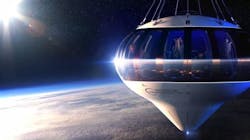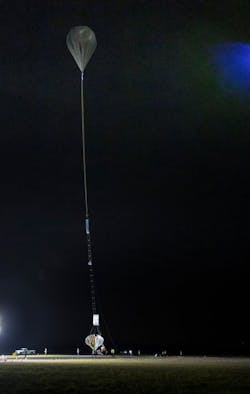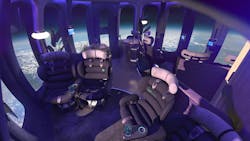Space Perspective, a Florida-based company, is planning on taking tourists for six-hour trips up to 100,000 ft in its Spaceship Neptune starting in late 2024. Ticket prices are set at $125,000 per person and the company claims it has already sold out all the available slots for 2024.
Though they call it a spaceship, Neptune and its passengers do not go into outer space, which is usually considered to be 62-miles above the surface of the Earth, just above the Karman line. This boundary defines the lower border of outer space in space treaties and aerospace records. Neptune will, however, get to about 19 miles above the Earth, putting it above 99% of the Earth’s atmosphere, and easily high enough to see the curvature of the Earth.
Neptune, which its developers call “the most accessible, most sustainable and safest spacecraft on or above Planet Earth,” consists of a balloon, reserve descent system and a capsule.
The balloon is based on technology the company has used for decades on missions with NASA and other government agencies to carry aloft telescopes and other heavy instruments. It uses hydrogen as a lifting gas and is 18,000,000 ft3 when fully expanded. This would make it roughly 324 ft in diameter if it were a sphere when fully inflated. The entire spacecraft—balloon, cabling and capsule—stand over 700 ft tall before it is launched from NASA’s Kennedy Space Center, and prevailing winds should take it out over the Atlantic Ocean.
Neptune lacks any thrusters or propulsion and floats freely. It cannot be steered.
The pressurized capsule is large enough to seat eight passengers and a pilot. Accommodations include comfortable seats, adjustable lighting, a sound system, a bar and a bathroom outfitted with a window. Passengers can stand and walk around, and Wi-Fi will let them say in contact with folks on Earth. Windows measuring 1.8 ft wide and 5 ft tall—the largest windows in an “aircraft” that has flown this high—circle the capsule, giving passengers a 360-deg. view.
The capsule can be reconfigured for special events. For example, if your budget can handle it, the company will accommodate weddings and even dinners for two.
The backup descent system consists of four parachutes attached to the capsule. If needed, they can be deployed to carry the capsule down to a safe landing, presumably in the Atlantic Ocean. This type of parachute-based approach has been safely used on more than a thousand spacecraft flights.
On lift-off, the balloon climbs at 12 mph up to 100,000 ft as the pilot controls lift by adjusting hydrogen pressure in the balloon. On typical passenger flights, which will be regulated by the FAA Office of Commercial Spaceflight, it will remain at that height for about two hours, then descend at 12 mph to a splash down in the ocean. A specially shaped cone on the belly of the capsule will ensure a smooth landing, says the company. The capsule will then float, which could be a rocky ride, as it awaits pickup by a dedicated ship, which will retrieve the passengers, capsule and balloon.
Neptune can also be used for scientific missions and carry equipment up to 100,00 ft. For one of its test flights, for example, it carried winning projects in a science competition for students in the 7th through 12th grades. One of those experiments measured the sun’s magnetic field while another measured the effect of the near-space environment on memory materials. It also carried and tested ozone sensors developed at the University of North Florida.
More information on Spaceship Neptune and booking a flight can be found here.


